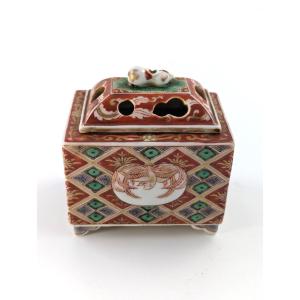A Koro is a type of Japanese incense burner used for burning and storing incense sticks. Typically, it is a small cylindrical container with a removable lid, where incense sticks are stored vertically. Koro has a long history in Japan, dating back to the Heian period (794-1185 AD) when they were first used in religious ceremonies and rituals.
During the Edo period (1603-1868), Koro became popular among samurai and wealthy merchants as a means to purify the air and create a pleasant fragrance in the home. Koro from this period were often made of metal, such as bronze or brass, and adorned with intricate patterns and motifs, including dragons and phoenixes.
In the Meiji period (1868-1912), when Japan opened up to the world, Koro were made from a wide variety of materials, including ceramics, lacquer, and bamboo. The production of Koro expanded and became more diverse, with new designs and styles emerging, including Koro created for use in the tea ceremony.
Dimensions: Width: 7.5 cm, Depth: 5.5 cm, Height: 8.3 cm
Condition: Minor gilt loss consistent with age. Otherwise, in excellent antique condition.
Please study the accompanying photographs carefully, as they form an integral part of this description. The item will be shipped with full tracking and insurance. Please note that shipping costs include labor, packaging, and postage.




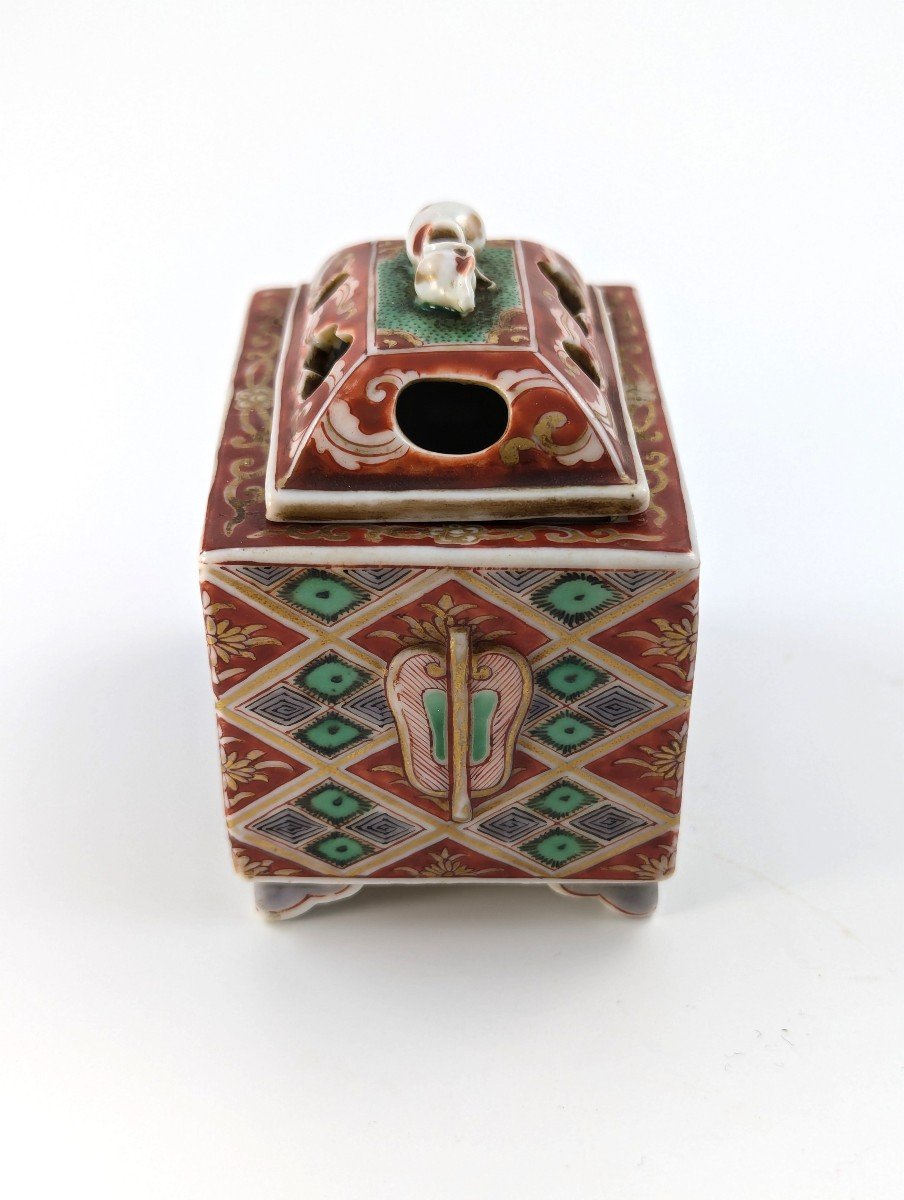
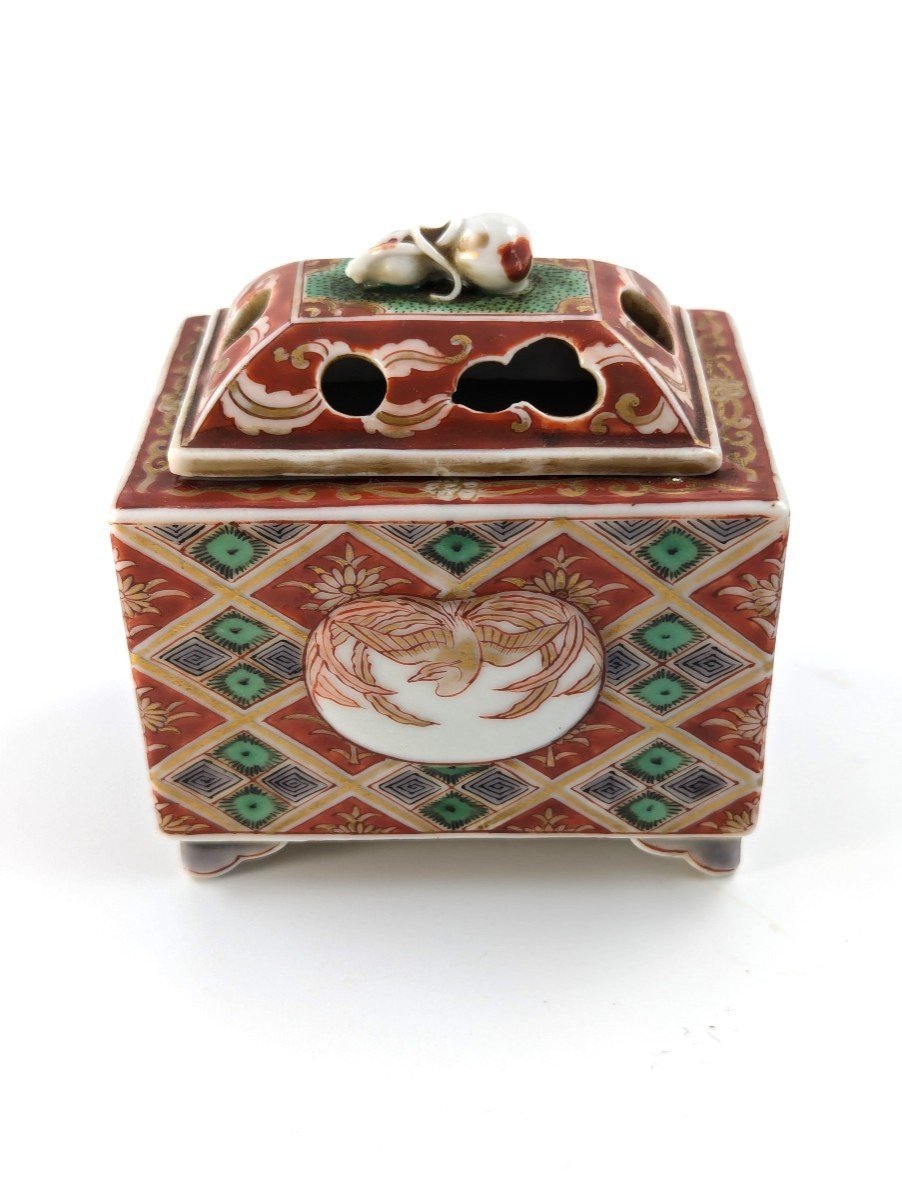
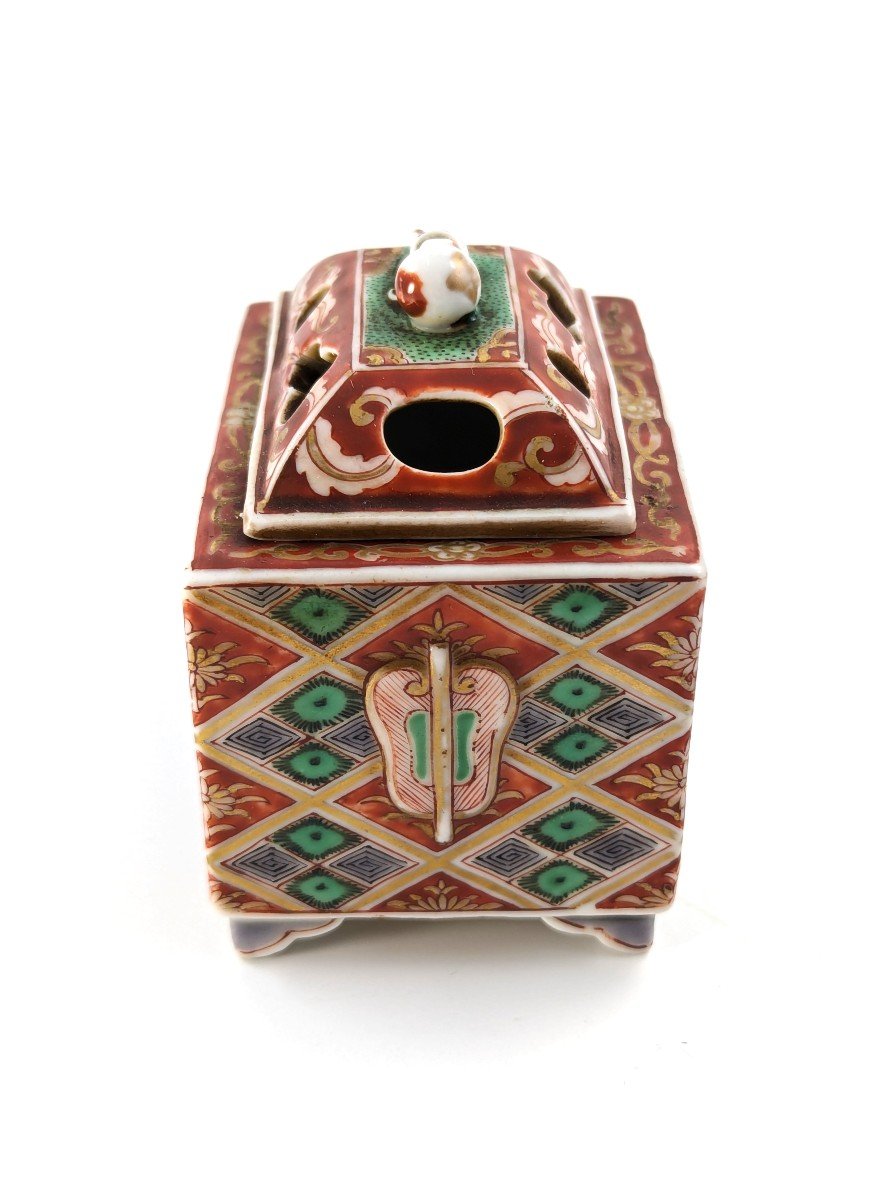

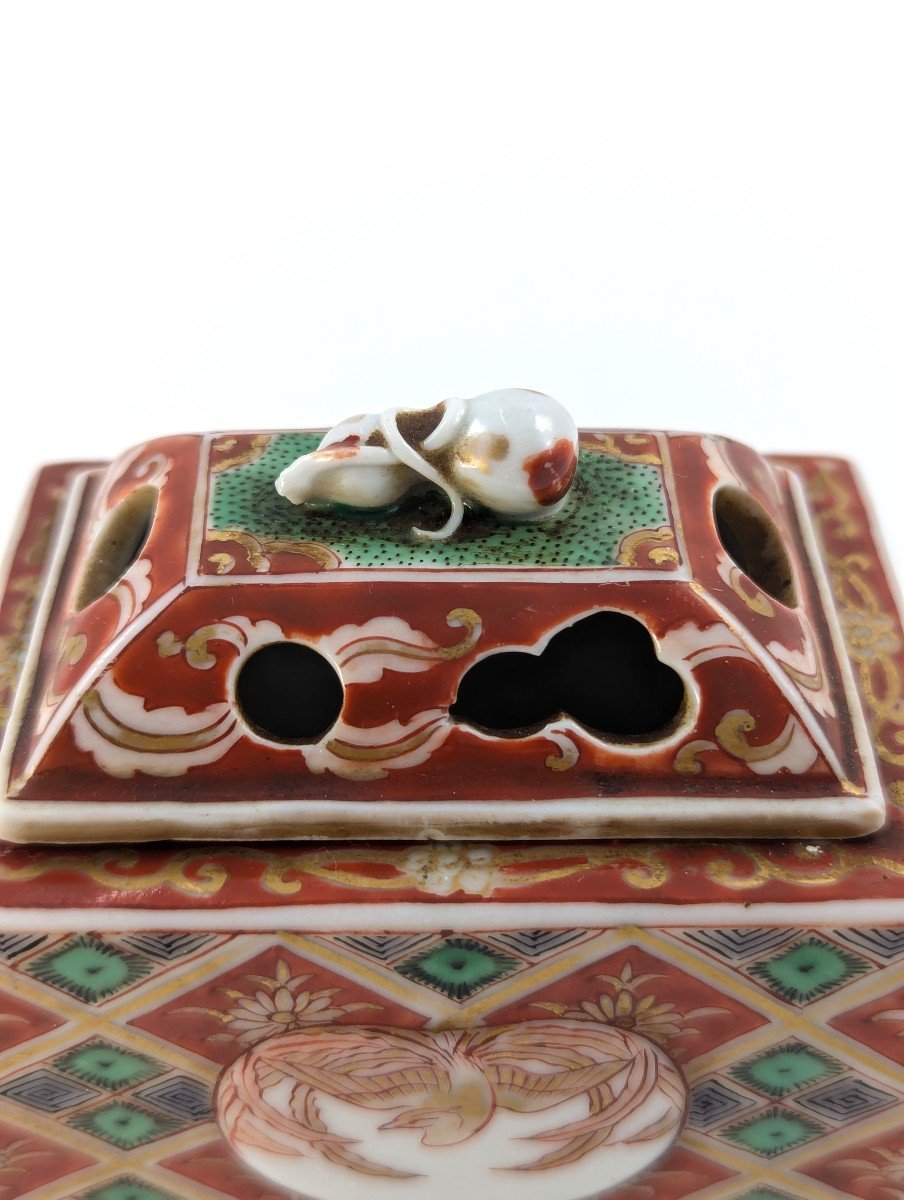

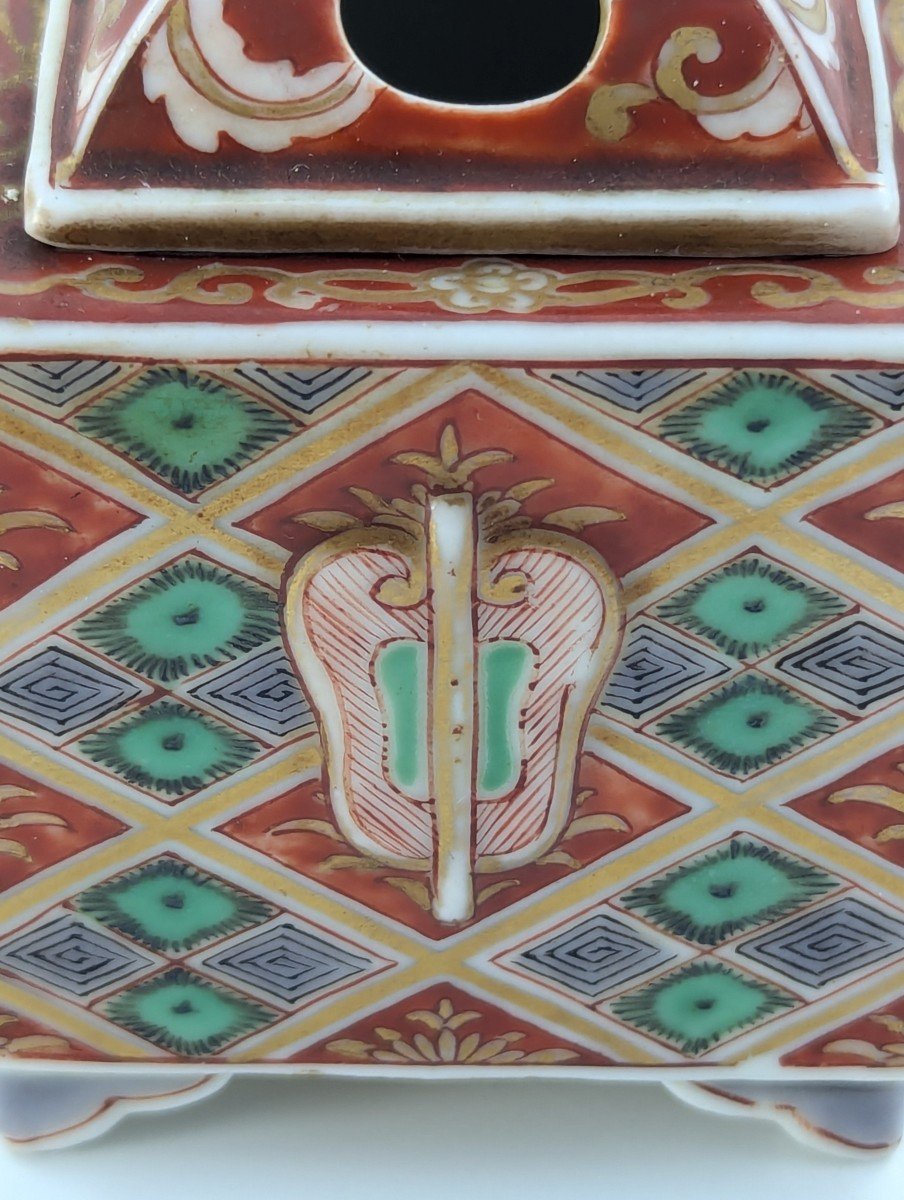
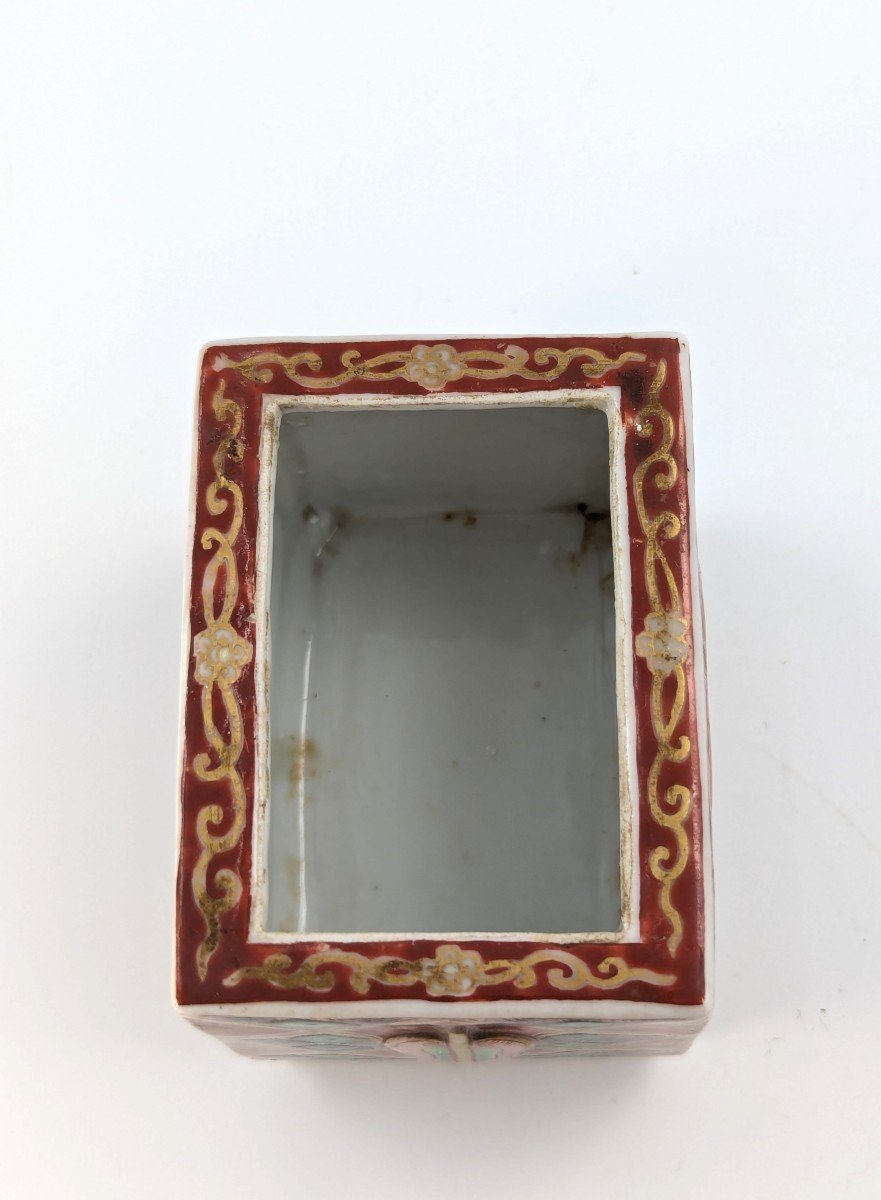

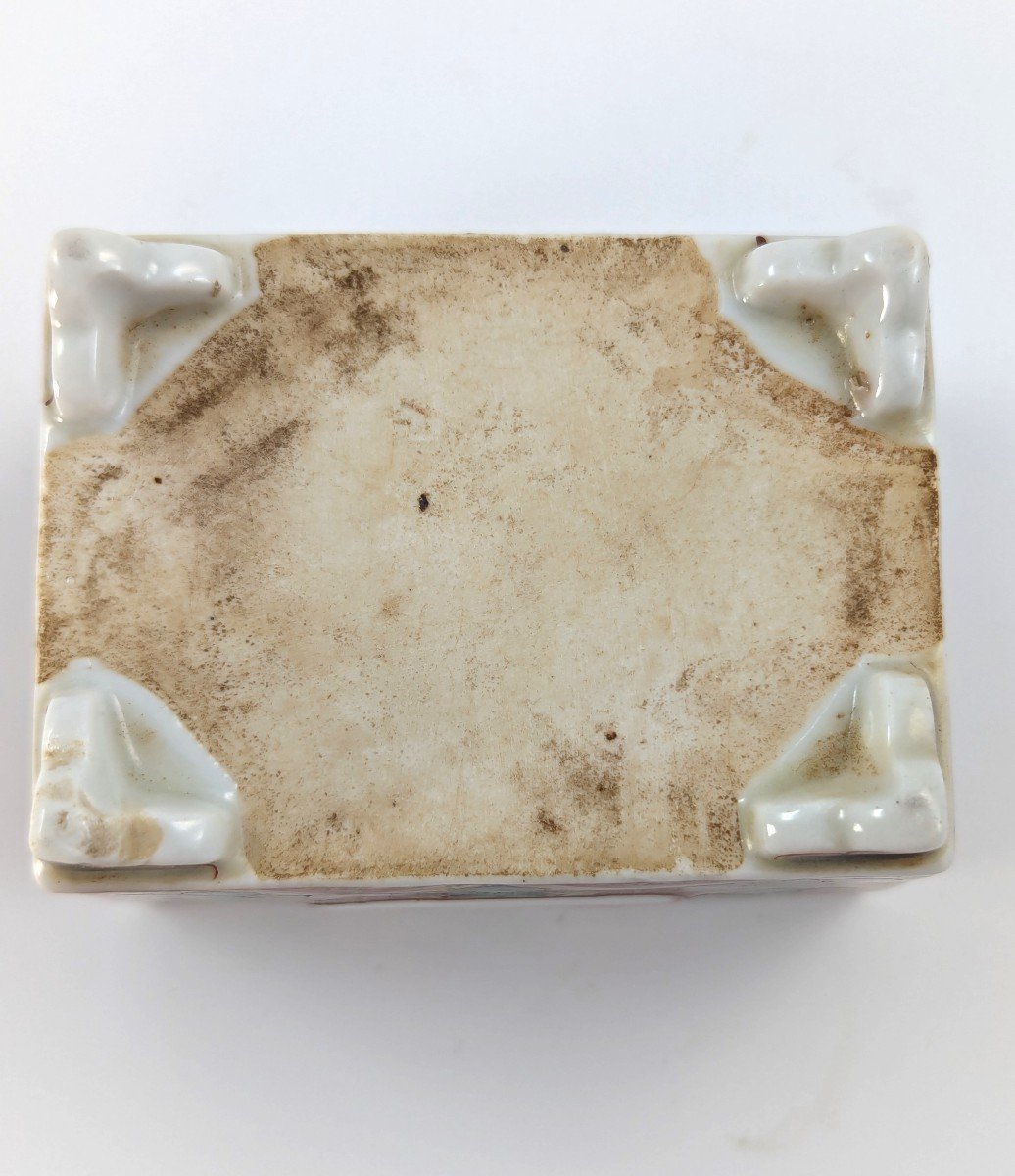
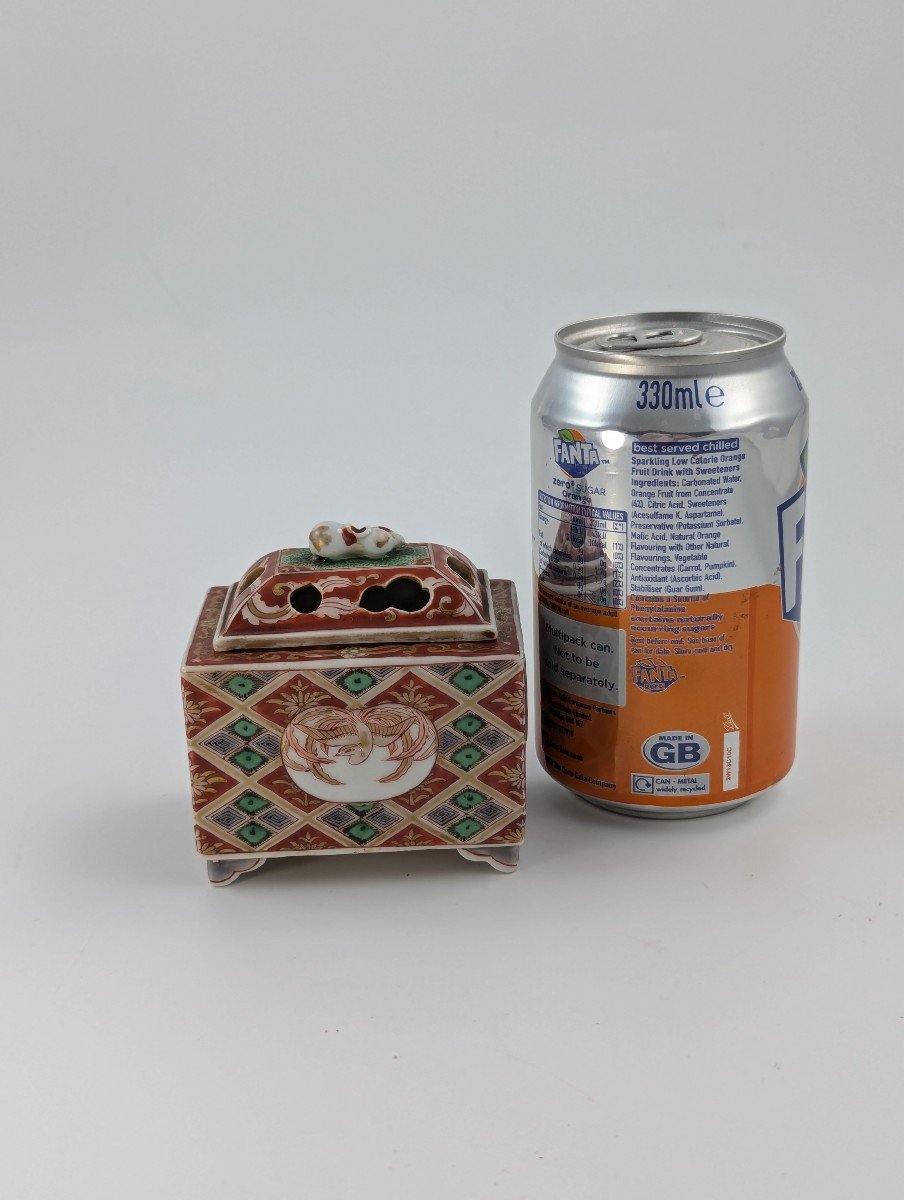



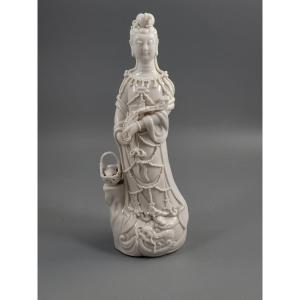







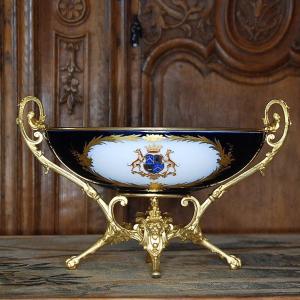



 Le Magazine de PROANTIC
Le Magazine de PROANTIC TRÉSORS Magazine
TRÉSORS Magazine Rivista Artiquariato
Rivista Artiquariato
